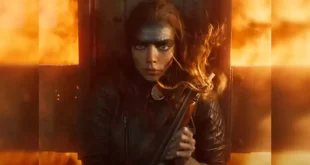James Cameron is proof you can have your cake and eat it too, that it’s possible to make large-scale blockbuster entertainment with cutting-edge technology while also touching on worthy themes. Avatar touches on imperialism, racism, militarism and patriotism, corporate greed, property rights, spirituality, and religion. Compare this to the pro-military pro imperialism messages in Top Gun Maverick or the endless Marvel propaganda. Cameron does the impossible job of making world-class entertainment that makes you think about more. Young kids can experience this entertainment triumph while understanding why these themes are important.
If the first Avatar was about protecting our forests, the second film is now about protecting our oceans. The human villains from the first are now back to colonize Pandora for good. Jake Sully and his family go on the run and hide with the Metkayina reef people clan at Pandora’s eastern seaboard. Conflict arises regarding the acceptance of Sully and his Omaticaya clan. The family learns the way of the Metkayina and one of the kid’s bonds with a sea creature. The kids and Sully are also part human putting them in further conflict.
What sets this Avatar sequel apart, though, is the stunning visuals. The whole time watching the first film in 2009, I was aware that I was watching a product of computer effects. This time though, I was floored by how insanely realistic everything looked. The results are the closest you’ll get to virtual reality without putting on the goggles. Characters who look so real you feel like you can reach out and touch them. Worldbuilding that feels lived in and not shot soullessly in front of a green screen. It’s a monumental leap forward for visual effects in film. This way, the audience can connect with the characters. “I see you.” takes on a whole new meaning. The action scenes are exceptionally choreographed and refreshingly not confusing. Cameron still knows how to craft action very well.
Many complain about the writing and dialogue in these movies, but Cameron’s goal is to give us a simple, easy-to-follow storyline that he can build his canvass around. There’s nothing wrong with that. There aren’t as many caricatures, and the characters have a chance to develop. More locations and characters we visit in this than in the first one, so it’s a writing improvement in many ways. Cameron introduces new concepts and themes halfway through that keep us on our toes. The storyline is sufficiently engaging, and you don’t feel overwhelmed or hampered by it.
Is the film perfect? No. Are there lines of dialogue that might make you roll your eyes? Sure. However, no one is better working today than James Cameron in terms of worldbuilding. It’s a monumental leap forward in 3D technology and shames anything else that’s come out this year. Compared to the stale Marvel machine shot in front of a green screen with little artistry, what Cameron has done is proof that modern movies made for theatrical release can survive. See it. See it in theaters and see it in 3D. The three hours flew by.
 Movie Finatics The Place for Movie Lovers
Movie Finatics The Place for Movie Lovers



